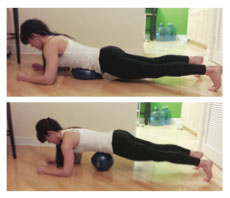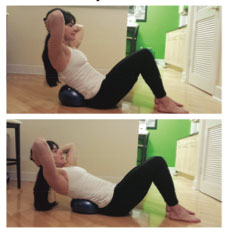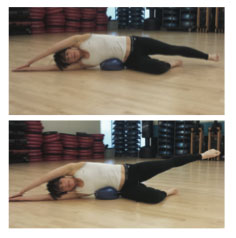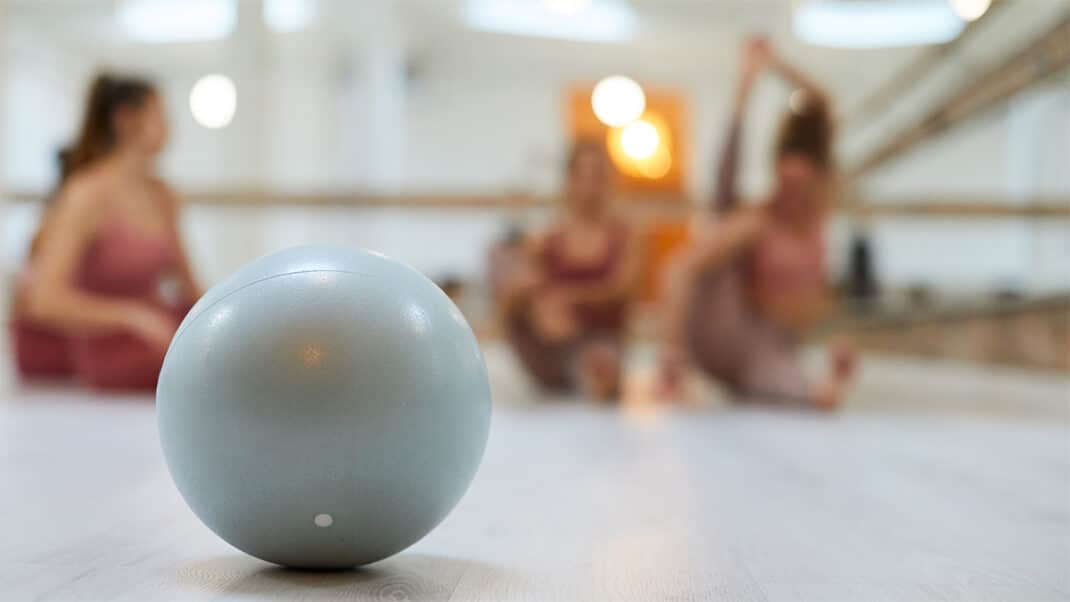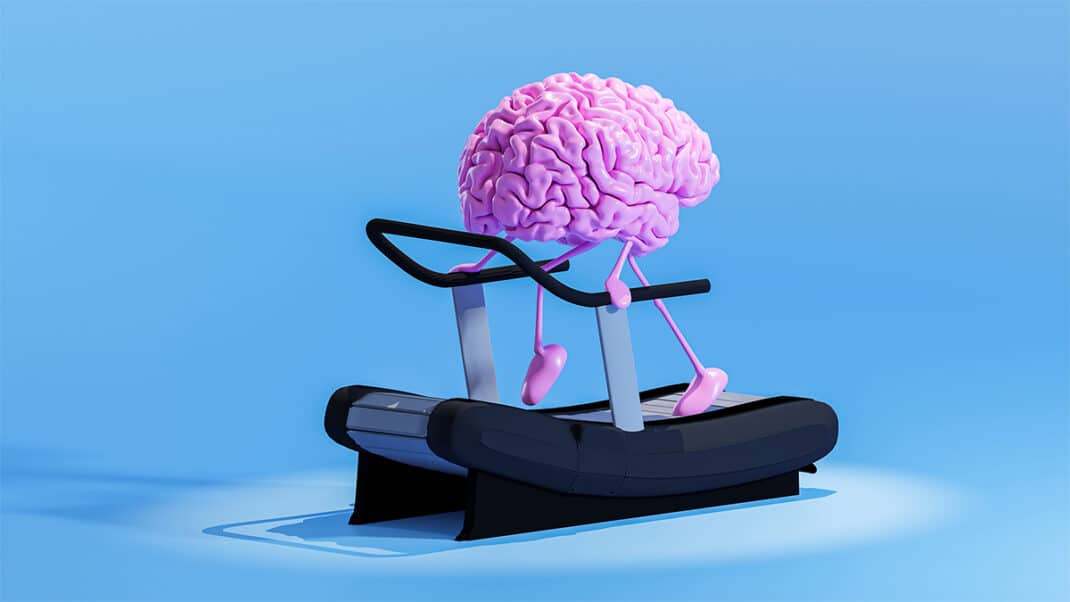Miniball Moments
Challenge participants to connect with the core in different, fun ways.
Fitness “toys” can make a big difference in helping class participants heighten body awareness—especially awareness of their core muscles. Case in point: a small, soft, inflatable exercise ball known as a sponge ball or Pilates miniball. The miniball comes in a range of sizes, from 7 to 12 inches in diameter, and is a great addition to many classes. Use it to help attendees increase range of motion; to promote co-contraction, or bracing, of the “inner unit”—including the transversus abdominis, pelvic floor, diaphragm and multifidus; and as a reference point to correct alignment.
Include the following moves in your next class for variety and challenge.
Prone Plank
Lie prone on forearms in plank position over ball, which is directly under navel. Elbows are bent at 90 degrees under shoulders, forearms are neutral, thumbs up. Extend legs or drop knees to floor. “Squish” ball, then pull navel away by drawing ribs and hips closer to each other to brace core.
Lift abdominals up and away from ball, and slightly protract scapulae. Stay in contact with ball, but do not rest on it—it should retain its spherical shape. Lengthen spine to form perfectly aligned plank.
Purpose. The ball helps participants find neutral spinal alignment while encouraging body awareness in plank.
Engagement. The entire anterior kinetic chain engages to hold the body up against gravity. The posterior kinetic chain stabilizes the joints to allow the anterior chain to work efficiently.
Ab Curl
From seated position on floor, place ball behind pelvis (sacrum). Lie supine over ball, spine slightly flexed. Reset ball closer to ribs and shoulders for less range of motion or if more back sup- port is needed. Bend arms, and place hands behind head for more challenge, or behind knees for less challenge. With control, extend spine over ball, then flex spine to original position. Gaze at knees as reference point to avoid overextending thoracic and cervical spine.
Purpose. The ball allows for greater range of motion and engagement. The ball’s instability also requires participants to stabilize the core.
Engagement. The core muscles, including the rectus abdominis and obliques, engage to flex the spine. Lateral and posterior kinetic-chain muscles stabilize the body on the ball.
Side Leg Lifts
Lie sideways over ball, which is directly beneath waist. Top leg is straight, aligned with spine. Bend bottom leg, stack knees and hips, and dorsiflex ankle. Extend bottom arm on floor, and rest head on it. Extend top arm overhead. Body is in alignment from head to tail, spine laterally flexed over ball. Plantar-flex ankle of top leg and abduct; maintain spinal alignment and parallel leg position. Do not allow top leg to rotate laterally. Lower (adduct) leg to original position.
Purpose. The ball stabilizes hips and spine to allow only leg abduction and adduction.
Engagement. While the hip abductors are the focus, the gluteus maximus and muscles of the spine stabilize the body in the frontal plane.
Abbie Appel
Abbie Appel is an international fitness expert and educator who has written the SCW Ballet Barre Certification and the SCW Pilates Matwork Certification. She is a Rykä® FIT-PRO Ambassador and a senior master trainer and consultant for Schwinn® and TRX®. As a program design and instructor development specialist, Abbie creates and delivers programming for organizations such as Equinox, Crunch, and YMCA, among others. Abbie has contributed material to numerous fitness videos and publications such as Prevention and Shape magazines.
